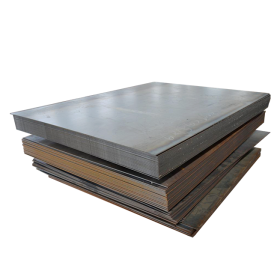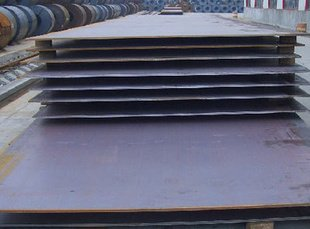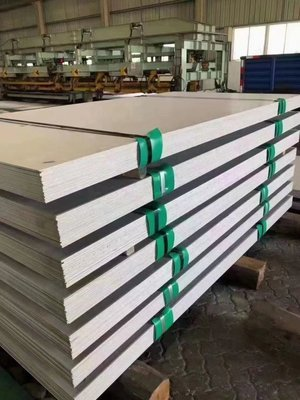Introduction to Hot Rolled Steel Plate
Hot rolled steel plate, also known as hot rolled steel sheet or hot plate, is produced by rolling steel at a temperature above the re-crystallization temperature after heating. It is flat and rectangular, and can be directly rolled or cut from wide steel strips. Hot rolled steel plate has good ductility and mechanical properties, making it widely used in various fields.

Common Specifications
The specifications of hot rolled steel plates are diverse to meet the needs of different fields. Here are some common specifications:
l Thickness: Generally ranging from 0.35 to 250mm (some sources indicate a maximum thickness of 200mm), with a thickness interval of 0.5mm. Common thicknesses include 0.8, 1.0, 1.2, 1.5, 1.8, 2.0, 2.35, 2.45, 2.50, 2.70, 2.75, 2.8, 2.9, 2.95, 3.0, 3.25, 3.3, 3.5, etc., mm.
l Width: Generally 600mm and above, or any size that is a multiple of 50mm or 10mm. Common widths include 1000, 1219, 1250, 1500, 1600, 1800, 2000, 2200, 2500mm, etc. Non-standard widths range from 300 to 3000mm.
l Length: Generally any size that is a multiple of 100mm or 50mm. However, for steel plates with a width of 4mm or less, the minimum length shall not be less than 1.2m, and for plates thicker than 4mm, the minimum length shall not be less than 2m. Common lengths include 2000, 2438, 2500, 3000, 6000, 8000mm, etc., or lengths may be given in coils.
Additionally, hot rolled steel strips have their own specific specifications, with a nominal thickness generally ranging from 1.2 to 25mm, and nominal widths similar to those of hot rolled steel plates.
Applications
Due to its excellent mechanical properties and ductility, hot rolled steel plate has a wide range of applications:
l Automobile Manufacturing: Used for manufacturing bodies, frames, and other components.
l Electrical Products: Used for manufacturing electrical enclosures, brackets, and other components.
l Building Structures: Used for manufacturing bridges, building components, etc.
l Machinery Manufacturing: Used for manufacturing various mechanical parts and components.
l Shipbuilding: Used for manufacturing hull structures, etc.
Advantages
Compared to other types of steel plates, hot rolled steel plate has the following advantages:
l Good Ductility: After hot rolling, the steel plate has good ductility and toughness, making it easy to process and form.
l High Strength: Hot rolled steel plate has high yield strength and tensile strength, capable of withstanding large loads.
l Lower Cost: The production process of hot rolled steel plate is relatively simple, resulting in lower costs and more affordable prices.
CREDIT

Market Trends and Prospects
With the development of the global economy and the acceleration of the industrialization process, the demand for hot rolled steel plate continues to grow. Especially in the fields of automobile manufacturing, electrical products, and building structures, the application of hot rolled steel plate is becoming increasingly widespread. In the future, the market for hot rolled steel plate will exhibit the following trends:
l Diversified Demand: As the performance requirements for hot rolled steel plate in various fields continue to increase, the market will have more diversified specifications, varieties, and quality requirements for hot rolled steel plate.
l Technological Upgrades: Manufacturers of hot rolled steel plate will continuously increase research and development efforts to improve production efficiency and product quality to meet market demand.
l Environmental Protection and Energy Saving: With the enhancement of environmental awareness, hot rolled steel plate production will pay more attention to energy conservation, emission reduction, and the application of environmental protection technologies.
Quality Inspection Process
Quality inspection of hot rolled steel plate is an important step to ensure its performance and quality. The general quality inspection process includes the following aspects:
l Visual Inspection: Inspect the surface quality of the hot rolled steel plate for defects such as cracks, inclusions, rust, etc.
l Dimensional Measurement: Use measurement tools to check whether the thickness, width, and length of the hot rolled steel plate meet the specified requirements.
l Mechanical Performance Testing: Conduct tensile tests, bending tests, and other mechanical performance tests to evaluate the yield strength, tensile strength, elongation, and other performance indicators of the hot rolled steel plate.
l Chemical Composition Analysis: Use chemical analysis methods to detect the chemical composition of the hot rolled steel plate to ensure it meets relevant standards or customer requirements.
In summary, hot rolled steel plate, as an important steel product, has a wide range of applications and market demand in multiple fields. In the future, with the continuous advancement of technology and market development, hot rolled steel plate will exhibit more diversified, high-performance, and environmentally friendly trends.
CREDIT

